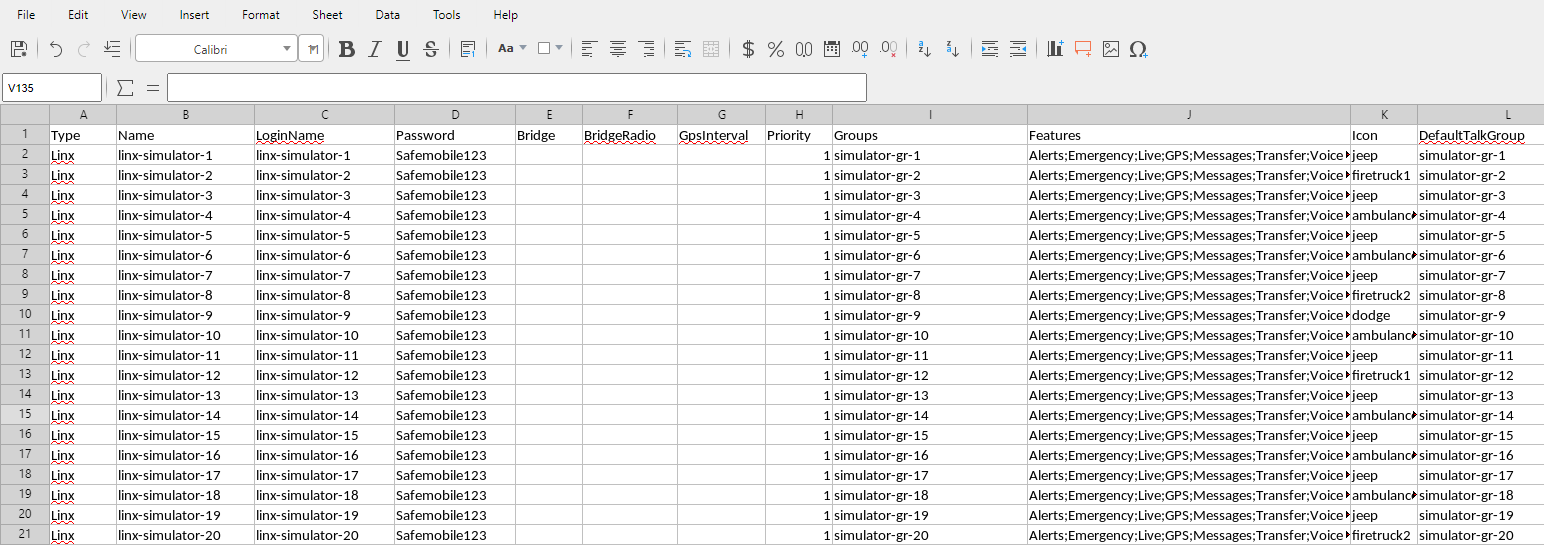Has been tested and developed using:
ubuntu 16.04.6
openssl: 1.0.2g
node: 8.16.0
Run in docker
docker build -t linx-simulator .
docker run -it --rm linx-simulator
NODE_TLS_REJECT_UNAUTHORIZED='0' node ./index.js --path="./config/dev/"
Errors because audio driver:
ALSA lib confmisc.c:768:(parse_card) cannot find card '0'
ALSA lib conf.c:4292:(_snd_config_evaluate) function snd_func_card_driver returned error: No such file or directory
ALSA lib confmisc.c:392:(snd_func_concat) error evaluating strings
ALSA lib conf.c:4292:(_snd_config_evaluate) function snd_func_concat returned error: No such file or directory
- How audio on Linux works
docker run -v /run/user/1000/pulse/native:/run/user/1000/pulse/native -e PULSE_SERVER=unix:/run/user/1000/pulse/native -u 1000:1000
- Play sound in docker on MacOS
- Use sound in docker from Linux
- SO - run apps using audio in a docker container
- run with
-v /run/user/$UID/pulse/native:/path/to/pulseaudio/socket
- run with
Requirements:
curl -sL https://deb.nodesource.com/setup_8.x | sudo -E bash -
sudo apt-get install -y nodejs
sudo apt-get install -y build-essential
install python 2.7
rm package-lock.json && rm -rf node_modules && rm -rf ~/.node-gyp only **(if package-lock.json/node_modules or node was installed)**
sudo apt-get install libasound2-dev
sudo npm i -g node-gyp
sudo npm install --unsafe-perm
How to guide how to configure units and the simulator
1. Insert Groups
Groups will be inserted using the following script directly on the database:
set search_path to public;
do $$
declare i INTEGER := 1;
declare sipid integer;
declare ressql varchar;
declare acc_id integer = 1;
declare number_of_groups INTEGER := 50; -- How many groups we create
declare dispatcher_name varchar := 'Dispatcher Sergiu';
declare groups_name varchar := 'sergiu-sim-';
BEGIN
-- Create groups
WHILE i <= number_of_groups LOOP
SELECT get_new_sipid(acc_id) INTO sipid;
SELECT insert_update_groups(acc_id, Null, groups_name || i, '1', '1', '0', '0', '0', sipid, 0,'','') INTO ressql;
i = i + 1;
raise notice '%', sipid; --
raise notice '%', i; --
raise notice '%', ressql; --
end loop;
-- Assign dispatcher on the groups
insert into public.asset_group (asset_id, group_id)
select (select id from public.asset where name = dispatcher_name), id from public."group" g where name like groups_name || '%';
end; $$;
2. Insert units
The units will be inserted from the provisioning(Units -> Import from file) and the file_name.xlsx file will have the following format:
3. Simulator configuration
For the simulation to simulate in a period, we must put the delay_between_clients setting in settings (the value is in milliseconds).
Example in config
[mumble]
port = '5668'
host = '10.120.1.169'
[hub]
address = 'https://10.120.1.169/'
[elogs]
name = '169'
[api]
port = ''
host = '10.120.1.169/api'
use_secure = true
accept_untrusted_certs = true
[settings]
max_fails = 20
send_voice = true
send_gps = true
gps_report_interval = 10000 # The interval in which the GPS is sent
gps_lat_start_point = 46.217802
gps_lng_start_point = 24.776126
delay_between_clients = 1500
[assets]
# linx-simulator-1 - linx-simulator-10
# ids = [15,16,17,18,19,20,21,22,23,24]
# linx-simulator-1 - linx-simulator-25
# ids = [
# 15,16,17,18,19,20,21,22,23,24,
# 25,26,27,28,29,30,31,32,33,34,
# 35,36,37,38,39
# ]
# linx-simulator-1 - linx-simulator-50
ids = [
15,16,17,18,19,20,21,22,23,24,
25,26,27,28,29,30,31,32,33,34,
35,36,37,38,39,40,41,42,43,44,
45,46,47,48,49,50,51,52,53,54,
55,56,57,58,59,60,61,62,63,64
]
[sounds]
sound = 'sound.mp3'
#sound = 'file_example_MP3_700KB.mp3'
sounds_total_number = 1
**4. To start the simulator**
To start the simulator we must specify which config file we want to use. ``` NODE_TLS_REJECT_UNAUTHORIZED='0' node ./index.js --path="./config/dev/" ```
Problems you may encounter
**1.** If you want to create groups, make sure you have enough free space on that account. If you do not have enough space you can use the following script (you must change the id to match your account) ```sql set search_path to public; DO $BODY$ BEGIN UPDATE license SET max_assets = 1000, max_dispatch = 1000, max_talk_groups = 1000 WHERE id = 1; UPDATE license SET crc = md5(coalesce(max_assets, 0)::text || coalesce(max_talk_groups, 0)::text || coalesce(max_dispatch, 0)::text || coalesce(to_char(expires_on at time zone 'utc','YYYY-MM-DD"T"HH24:MI:SS'), '1970-01-01T00:00:00')::text || coalesce(to_char(maintenance_end at time zone 'utc','YYYY-MM-DD"T"HH24:MI:SS') , '1970-01-01T00:00:00')::text )::varchar WHERE id = 1; END; $BODY$; ```
2. To start the server on a private system the setting is required:
NODE_TLS_REJECT_UNAUTHORIZED='0'
otherwise you will receive the error: Error: self signed certificate
Run with Vagrant
Create the VM with
vagrant up
After you change anything
vagrant destroy; vagrant up
# or
vagrant reload
After installation, got to VirtualBox and add audio card to VM in Settings for VM. Do a vagrant reload afterwards.
To see the ssh parameters for config use vagrant ssh-config. Vagrant will map the current directory to /vagrant by default.
Steps to do in VM:
vagrant ssh
cd simulator
sudo cp -R /vagrant/* .
sudo chown -R vagrant:vagrant *
sudo npm install --unsafe-perm ?
(sudo?) npm install --unsafe-perm
#run simulator
NODE_TLS_REJECT_UNAUTHORIZED='0' node ./index.js --path="./config/dev/"
Install plugin for virtual box guest additions:
vagrant plugin install vagrant-vbguest
Problems / to do
It worked once but now it does not work, don't know why.
